
In recent decades the Pacific halibut has risen in stature with anglers. Fifty years ago, catching one was rare, because Chinook and coho dominated fishing efforts. There were dedicated halibut pioneers, but most of the catch was accidentally taken by salmon anglers. Unfortunately, many of us were unskilled in the ways of halibut fishing and unprepared for what was to come once we got one onboard. There are many stories of bizarre encounters with halibut, including broken limbs and even battles to the death. Some are true and some are figments of overactive imaginations. One story stuck in my mind.
It involved two teenagers who were jigging for salmon from a canoe near Sidney. They hooked a halibut and quickly realized that bringing it onboard could end badly for them. So they played it out before dragging it to shallow water. Once there they jumped out, partly filled the canoe with water, and swam the halibut inside. Then they pushed the canoe a few yards to shore, dispatched the halibut, and paddled home. It’s a cautionary tale that reflects the necessary respect required when taking on these powerful fish.
With increasingly restrictive salmon regulations, angler interest in halibut has ramped up, particularly in the tourist fishery as lodges and guides started giving the big flatfish equal billing with Chinook. As a consequence, it’s become BC’s second-ranked marine sport fish.
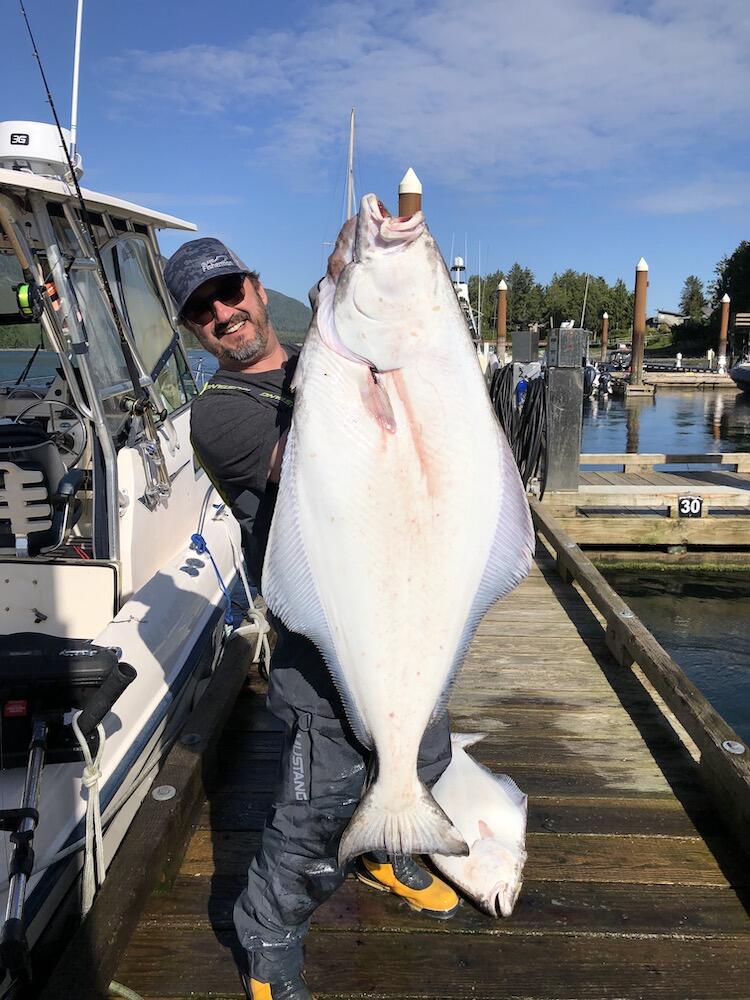
Publisher, Joel Unickow with a fresh caught halibut thanks to Lucky Strike Sportfishing, Tofino BC
Halibut Facts
Halibut are widely distributed over the North Pacific Ocean from Baja California along the length of the Pacific coast north to the Bering Sea. They are also plentiful in Russian and Japanese waters. In 1904, based on studies by P.J. Schmidt, the Pacific halibut was scientifically recognized as Hippoglossus stenolepis.
These are massive fish. The largest sport-caught Pacific halibut stands at 459 lbs near Unalaska, AK, in 1996. A 482-lb giant was landed but subsequently disqualified because it was harpooned and then shot prior to landing.

Photo and context: Fish & Game Mag. “Jack McGuire, of Santa Ana, Calif., reeled in the 482-pound halibut from Alaskan Panhandle waters near the mouth of Glacier Bay while on a chartered fishing trip with three friends.”
The largest known commercially caught fish (at the time of writing) was 8′ 2″ and weighed 533 lbs. All three came from Alaska. The consensus view is the bigger fish reside in northern waters. Fish of 100 lbs to 200 lbs are not uncommon in BC and Alaska. These have earned descriptive nicknames like “barn doors”. By comparison, California halibut are quite small, with an average size around 20 lbs. The big fish are all females; males rarely exceed 50 lbs.
Halibut can live more than thirty years, reach sexual maturity between 8 and 15 years old, and spawn from November to January in deep ocean waters. The eggs are left unattended and drift towards shallow inshore feeding grounds where they complete the transformation to small fish. They remain in these areas until they are big enough to move offshore. Many anglers believe halibut are homesteaders. This is untrue. While they don’t migrate as far as salmon, tagging efforts show they travel up to 2,000 miles.
Another misconception is that halibut are scavengers. They do take spawned-out salmon carcasses flushed into estuaries. However they prefer to feed on smaller fish, crabs, clams, shrimp, squid, and prawns that inhabit bottom structure consisting of sand, gravel, and cobble. They occasionally rise up the water column to chase schooling fish.
Halibut are still important to Canadian and U.S. commercial fisheries. They have been managed bilaterally since 1923 by the International Pacific Halibut Commission. The Commission sets annual total allowable catches (TAC), which are divided between both countries. Canada then allocates its TAC between fisheries, with an 85% commercial and 15% public fishery arrangement, after native and scientific requirements are removed. The shares are accounted for in pounds, not pieces of fish, and because of this the recreational fishery prefers employing maximum size and possession limits to stretch the fishing season out as long as possible. Maximum size limits also protect large breeding-age female halibut.
For millennia, coastal First Nations relied on halibut for food. They developed highly sophisticated ways of catching them with hooks crafted from wood and bone that in some cases looked remarkably similar to modern circle hooks.
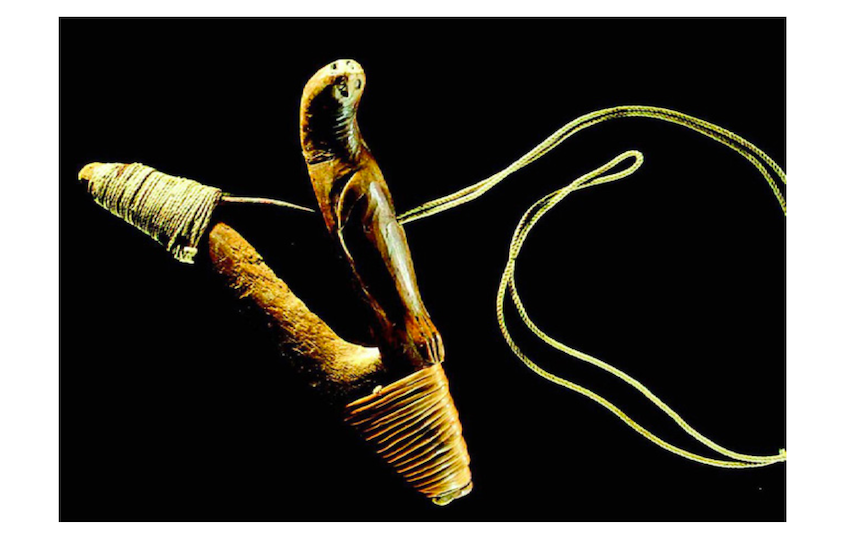
Tsimshian halibut hook, photo courtesy Manitoba Museum
Halibut Gear & Tactics
When To Fish For Halibut
Serious halibut fishing starts in mid-May. The exception is southern Vancouver Island, where nice-sized halibut are available even earlier. However, the best answer to “When should I fish?” comes from picking the best halibut tides. Focus on days with long slack waters and less than two knots of current. Slow currents make it easy to keep fishing gear near bottom and to deploy ground tackle for anchoring. Perfect halibut fishing conditions only occur a few times per month. The remaining days can be classified two ways: So-so for fishing or just stay home.
Where To Fish For Halibut
The short answer is “almost anywhere along BC’s coast.” The Georgia Strait can produce fish, but the abundance is small. Even so, there are plenty of other accessible locations for trailer boat anglers to fish, as well as top-quality lodge and guide operations that cater to tourist customers.
The precise answer to “Where should I fish?” is based on locating ground where halibut are likely to be found. Once you know what to look for, examine your marine charts. You might find some lightly fished areas, or even discover secret hot spots known only to you.
Four Halibut Location Examples
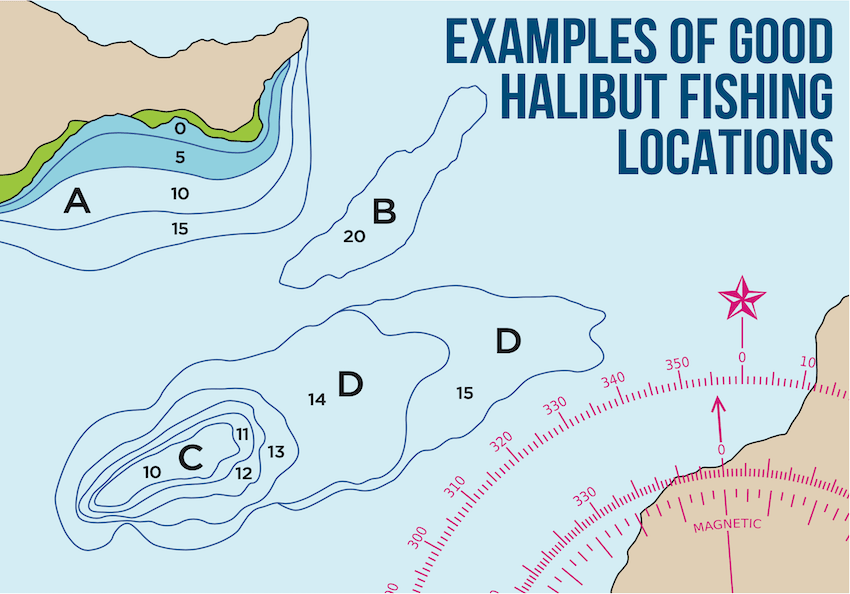
Image: Island Fisherman Magazine
A. Zero- to 15-fathom gradual sloping beach B. 20-fathom gully C. Steep-sided 10-fathom bank D. 14- to 15-fathom flats
A) Gradually Sloped Beach Structure
Gradually sloped beach structure is neglected halibut ground. Large expansive bays or long curving beaches with sand, gravel, and cobble structures that gradually descend to deeper water can be halibut magnets. The fish are there because the terrain is ideal for many of their preferred prey species. All halibut tactics produce over this ground.
B) Gullies
Gullies are seabed depressions that are a bit harder to find on your charts. Halibut hang out in these holes that are just a few fathoms deeper than the surrounding terrain. Test them with heavy jigs tipped with herring, squid, salmon bellies, or octopus. If your jigs produce, consider anchoring and giving them a thorough working over.
C) Banks
Banks like Constance, Swiftsure, and la Perouse are fabled halibut grounds. However there are many similar structures along the coast that are within reach of recreational anglers. These banks can be large or small, but all have similar characteristics. They rise out of deeper water and usually have moderate to steep slopes on all sides. They have relatively consistent depths over most of the surface area and contain vast amounts of forage species that locate on top during slack water or along the sides when the tide starts to run. They can be fished with heavy jigs rigged with upward facing hooks, slow trolled with natural baits and lures run off downriggers, or drifted with spreader bars. Anchoring on rocky jagged banks can be tricky, unless there are also areas of hard-packed cobble.
D) Flats
Flats are generally composites of sand, packed mud, gravel, or cobble. They occur everywhere. Channels between large or small islands, usually have fishable flats nearby, as do surf swept reefs. Years ago, I was Chinook fishing near Ucluelet with David Murphy. We were pounding the bottom between Great Bear, Alley, and Sail Rocks. Surprisingly, our first three strikes produced chicken halibut that had moved in from deeper water to feed. Flats are compatible with anchoring, but if they’re large, you might consider slow trolling, drifting, or using a “jig and move” tactic to locate fish quickly.
Halibut Gear

Rod and reel used by Foghorn Charters (Tom Davis photo)
Halibut can be landed on standard salmon gear, but using it as a primary system is not recommended. If you plan on fishing halibut regularly it’s time to invest in stiffer 6′ to 8′ rods, multiplier reels, 80- to 100-lb Tuff mainline, and 150- to 200-lb test monofilament leader material. You’ll also need a selection of large single hooks and circle hooks for rigging tandem bait hookups, as well as stronger swivels and snaps.
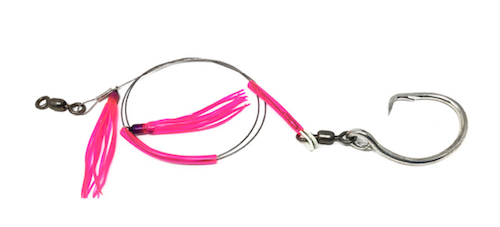
Circle Hook UV Skirts (Rite Angle)
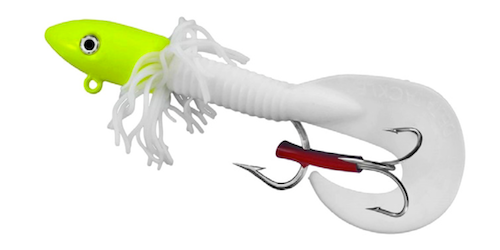
Hali Jig (Gibbs)
Buy some spreader bars or make your own from coat hangers.
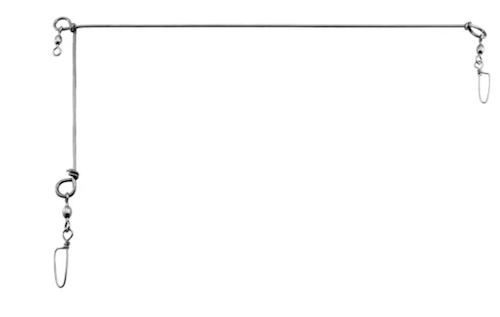
Spreader Bar
One kilo weights, an assortment of halibut jigs, and magnum hoochie skirts are also required. WARNING: Learn to anchor if you are really serious about halibut angling. Halibut anchoring can be extremely dangerous if not done correctly (refer to the article in the May 2021 Issue of Island Fisherman Magazine). You’ll also need a strong gaff and a halibut harpoon.
Important Tips
- Tie a string to your gaff or harpoon that’s the legal length or the season and measure by running the fish beside the string while still in the water, if you aren’t 100% sure
- Keep a sharp knife handy to cut your anchor rope in an emergency, and to bleed your halibut quickly
- Don’t anchor near other boats. Current and wind cause you to swing on your anchor. Estimate where you will be in relationship to other ground tackle when you reach the apex of your arc’s swing, then anchor accordingly
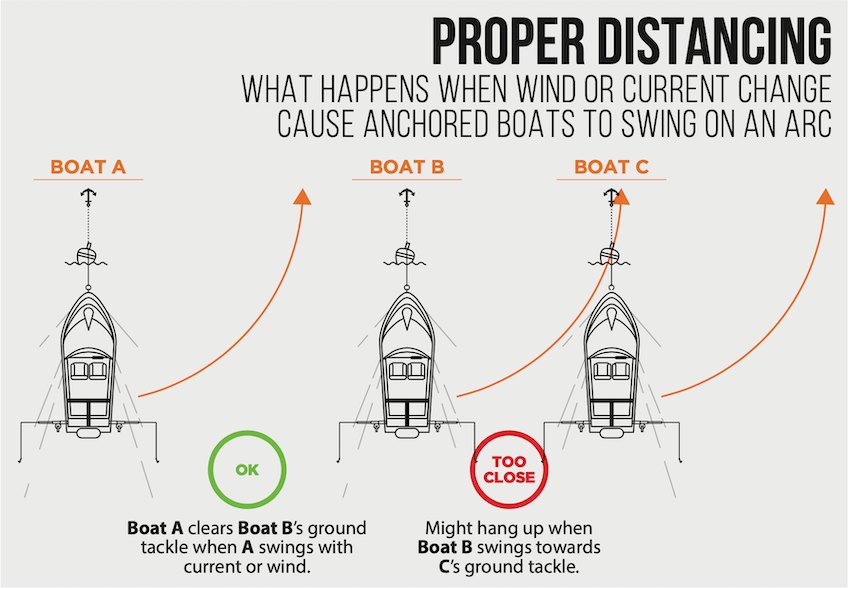
Image: Island Fisherman Magazine
- Don’t put a novice on the wheel when you are deploying and retrieving your anchor
- Don’t anchor in strong tides. It makes anchor deployment and retrieval difficult, and it can be dangerous
This article appeared in Island Fisherman Magazine, never miss another issue—subscribe today!
Visit the Store
$34.99
$34.99
Featured Catch

Joel Unickow halibut (Photo: Rob Frawley Lucky Strike Sportfishing Tofino)







